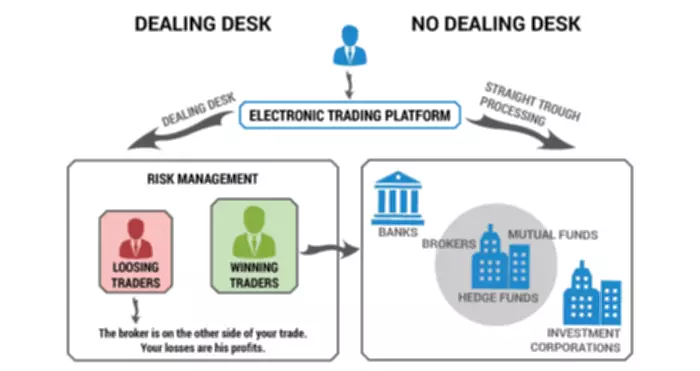Once data is recorded on a public blockchain, it becomes nearly impossible to change. Private blockchains enable individuals unparalleled management, not simply over who turns into part of the network but also when it comes to who will get to validate transactions. B3i is a consortium of insurance corporations leveraging non-public blockchain to improve efficiency in the insurance coverage sector. By digitizing and automating the switch of insurance contracts, B3i streamlines operations, reduces administrative bottlenecks, and enhances stakeholder trust. Private blockchains can use consensus mechanisms suited to the participants’ needs, corresponding to Practical Byzantine Fault Tolerance (PBFT) or Proof of Authority (PoA), prioritizing speed public vs private blockchain and effectivity over decentralization.
The Difference Between Public And Private Blockchains
Data is often protected by encrypting it which implies that it’s became a code that may solely be learn by someone who has the key to unlock it. Many organizations attempt to present extra information safety by adding encrypted information to the blockchain to retailer and transmit delicate information. With Dock, Verifiable Credentials and personally identifiable info is never saved on our public blockchain. Public blockchains are accessible to anybody with a computer and an web connection. Some general function blockchains allow the implementation of smart contracts on the pre-existing blockchain, meaning customers can obtain business objectives on an extant network. And the newest generation of blockchains for general computing are deliberately designed to permit the construction of sensible contracts and ‘Decentralized applications’ or Dapps directly on the blockchain.
Introduction To Blockchain Know-how
But if you would like to design and implement your individual enterprise Blockchain, a non-public Blockchain is a one-stop answer in that case. Consortium Blockchain is prone to interest enterprises and organizations who need to efficiently streamline communication among one another. Before choosing an ideal Blockchain, don’t forget to rethink your small business necessities and features that every Blockchain presents. Building on proprietary applied sciences and/or a proprietary, personal blockchain means that interoperability is usually financially nonviable. A personal blockchain should also be scalable, with the capacity for increasingly high quantity transactions.
Consortium Or Federated Blockchains
But it permits a centralized organization to replicate its organizational construction on the blockchain, which is significant in circumstances the place the organization will be held answerable for the validity of that info. For occasion, a authorities land registry may benefit from the security and auditability of a blockchain, nevertheless it can’t relinquish its ultimate authority over the records. Open blockchains, or public blockchains, could be accessed by all their users, and people users can be anyone.

Advantages & Disadvantages Of A Non-public Blockchain
- Public blockchains are perfect for transparency and safety nice for things like cryptocurrencies.
- Permissioned teams make it straightforward for companies to grant entry to related knowledge to the relevant individuals in a traceable means and permits permissions to be noticed and adjusted in real-time.
- In the case of other hybrid solutions, using a combination of each private and non-private blockchains might characterize viable solutions for companies.
- Scalability is also another side where both blockchains showcase their superiority.
- This ensures that the network is safe, clear, and tamper-proof, while nonetheless maintaining a degree of management and privateness for the members.
A public ledger just isn’t an excellent choice for a supply chain business as a result of the fact that lots of confidential information is shared. Access to the underlying biometric information doesn’t essentially need to be an open affair for everybody. Data could be stored, managed, and guarded using personal or hybrid blockchains to offer restricted entry to a defined set of authorities. The issuance of digital identities can be done by the government or a tech firm. Irrespective of the issuing authority, a public blockchain isn’t ideal, as entry to the stored data by most of the people can unduly compromise people’s knowledge. The consensus algorithm is also a major distinction that takes the basic public vs. private blockchain narratives to the next stage.
Why Do We’d Like Non-public Blockchains?
This is the essence of a public blockchain – a decentralized community where no single entity holds complete management. Any attempt to tamper with a single block would require modifying all subsequent blocks as properly. Due to the decentralized nature of the network, with no single entity controlling the majority of computing energy, such an effort would be computationally infeasible. These are just some illustrations of how public blockchain examples are disrupting conventional techniques and paving the way for brand new possibilities.
Hybrid Vs Public Vs Non-public Blockchain Comparability
At the identical time, this architecture provides enhanced safety towards attackers as they would wish to take over the overwhelming majority of the community to succeed. By easily merging with established systems and processes, they facilitate a fast transition, enabling organizations to experience the manifold benefits they bring to the desk quickly. This use case ensures the authenticity of goods, prevents counterfeiting, and enhances client trust by offering real-time entry to product origin and historical past.
Comparative Analysis Between Public And Private Blockchains

Most enterprises and establishments require a substantial quantity of privacy from a blockchain resolution. Blockchains are, at their very core, merely systems of code that retailer all transaction information of each transaction that has occurred on the chain. Blockchain technology uses maths and science to cryptographically safe, and link, each transaction to at least one one other within the chain; thus, blockchain expertise is mostly deemed “unhackable”. The blockchain refers to a digital ledger that is duplicated and distributed across the units of all participants in the community in a method that everybody shops the identical information and sees related modifications in real-time.

Permissioned blockchains additionally undergo this weakness as a end result of the networks and purposes that connect with the blockchain companies depend upon safety measures that could be bypassed. Permissioned blockchains usually have traits just like private and non-private blockchains, with many choices for personalisation. Private and permissioned blockchains are typically utilized by organizations or businesses with particular wants. Public and private blockchains face totally different challenges in relation to handling a rising consumer base and transaction quantity. These blockchains rely on a complex laptop program referred to as a consensus mechanism to validate transactions and maintain the integrity of the distributed ledger. Dock allows organizations and individuals to create and share verified data.
Finally, the most recent generation of public blockchains contain provisions to give their users a lot of the advantages of a personal blockchain, while preserving some great benefits of a public blockchain too. What is essentially the most excellent difference between public vs personal blockchains? The most significant distinction between them is their scalability, but ultimately, deciding which one to make use of will depend on your explicit use case and priorities.
This differs from personal blockchains the place a single entity controls the network and from public blockchains the place anyone can be part of the network. We examine public blockchains, represented by Bitcoin and Ethereum, with non-public blockchains like Hyperledger Fabric. You’ll discover their key variations with real-world examples and a transparent breakdown of their advantages and downsides. Whether you’re a beginner or just curious, this information offers a clear, easy-to-follow overview of private and non-private blockchains. Before diving into the variations between public and private blockchains, it’s important to have a primary understanding of what a blockchain is and how it works. A blockchain can be described as a distributed, decentralized, and immutable digital ledger that information transactions across a quantity of computer systems or nodes.
They offer a managed setting the place organizations can seamlessly implement compliance measures. Private blockchains provide the next stage of privacy in comparability with public blockchains. Access to the network is restricted to licensed individuals, making certain that sensitive data remains confidential and visual only to those granted permission.
Public blockchains are accessible from anyplace worldwide, making them suitable for borderless functions and financial transactions. Public blockchains are immune to censorship since no central authority has the ability to regulate or manipulate the network’s operations. Higher efficiency, higher scalability, and robust safety are a few of the strongest appeals of the non-public blockchain. DragonChain can also be a significant instance of a hybrid blockchain that provides enterprises the chance to deploy revolutionary solutions. The upside of each blockchain system that is being adopted should be considered to know if their companies can function well with the blockchain system. This article will give a elementary exposition to each sorts and we will also examine permissioned vs. permissionless blockchains and under which cases they’re perfect.
While the expertise retains its members anonymous, this can provide opportunities for criminally driven actions such as money laundering and human trafficking. Chainhound is a trusted supply for community information on over 100 blockchains. The security-oriented strategy on public chains does come with trade-offs on the performance front, nevertheless. Moreover, pushing changes to a network with out splintering it could be a challenge, as it is rare that each one participants agree on the proposed adjustments. Even if the encryption of the contents was by some means cracked, the data could additionally be incomplete or even nonsensical with out context. Established by R3 in 2014, Corda is a DLT community that permits every node to have its personal identification.
Read more about https://www.xcritical.in/ here.



